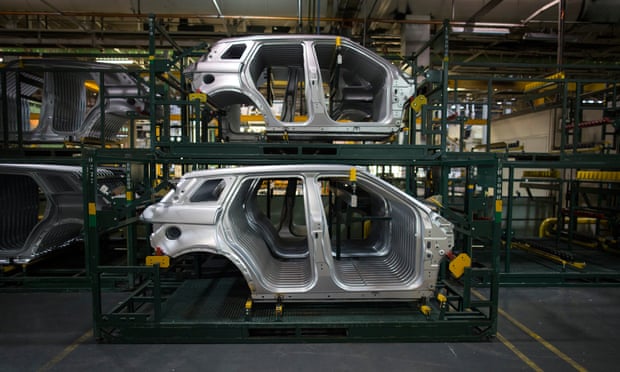UK manufacturing data better than expected
Feb 02, 2016
Headline PMI hit 52.9 in January on the back of a rise in domestic orders

British factories enjoyed a pick-up in activity last month but the flagging global economy took its toll on exporters and the manufacturing sector shed more jobs.
A closely watched measure of manufacturing, the Markit/CIPS Purchasing Managers’ Index, beat economists’ expectations and rose to a three-month high. The headline index hit 52.9 in January, up from 52.1 in December and well above the 50-mark that separates expansion from contraction. Economists had forecast a slowdown and a reading of 51.7, according to a Reuters poll.
“The UK manufacturing sector registered an uptick in its rate of expansion at the start of 2016, shrugging off a number of potential headwinds, ranging from global financial market volatility to localised flooding in the north of the country,” said Rob Dobson, a senior economist at the survey compilers Markit.
The survey of some 600 companies paints a more upbeat picture than official data for last year, which showed manufacturing output stagnated in the final quarter of 2015, leaving Britain’s service sector to drive overall economic growth.

Markit/CIPS UK Manufacturing PMI at 3-month high of 52.9 in Jan’16 (52.1 in Dec’15)
But behind the main index on the PMI report, there were signs that volatility on financial markets and worries about the global economic outlook were hurting UK manufacturers. The UK report followed a manufacturing survey from China signalling its factory sector shrank again in January.
Reflecting headwinds from China and other emerging markets, January’s rise in UK manufacturing production was driven by a rise in domestic orders, the PMI survey compilers said. Export orders had declined, however, as companies cited stronger competition and tough market conditions.
“The domestic market remains the key growth driver. In contrast, the trend in new export orders continues to disappoint, falling back into reverse gear in January. Even after recent easing in the exchange rate, a number of manufacturers are still finding that the strength of the pound against the euro is impacting order inflows,” said Dobson.
The performance of large-sized manufacturers was especially positive, whereas growth was comparatively “mild” at small and medium-sized companies, the report said.
There was also more downbeat news on employment, after the prediction from the manufacturers’ organisation EEF that the sector will shed tens of thousands of jobs this year as it grapples with tough export markets, steel plant closures and a drop-off in business from the embattled oil and gas industry.
The PMI report showed headcount was cut for the fourth time in the past six months. “Although the rate of decline in staff headcounts was only moderate, it was nonetheless the fastest for almost three years,” the report added.
Commenting on the PMI, the EEF’s chief economist Lee Hopley said the main activity index “got 2016 off to an encouraging start” but she was cautious about the outlook.
“Looking beyond the headline there’s conflicting signals, with growth drivers narrower in terms of sub-sector and size, and manufacturing posting job losses for the fourth time in the last six months,” she said.
“The question now is whether manufacturing will regain much-needed momentum in 2016 or whether today’s figure will prove a false signal. The sector is likely to remain under pressure in the coming months from the ongoing weakness of the oil price weighing on manufacturers embedded in the oil and gas supply chain, along with weak demand from emerging markets.”
There was little sign in the report of inflationary pressures building in the economy, suggesting the Bank of England will remain happy to keep interest rates on hold at their record low of 0.5% for many months to come.
After sharp drops in the price of many commodities, from oil to industrial metals, manufacturers’ average input prices fell at the fastest rate for four months in January. Part of that fall in raw material costs was passed on to customers as lower factory gate prices, the fifth reduction in as many months.
The Bank unveils its latest interest rate decision and forecasts for the economy on Thursday.
Source: The Guardian